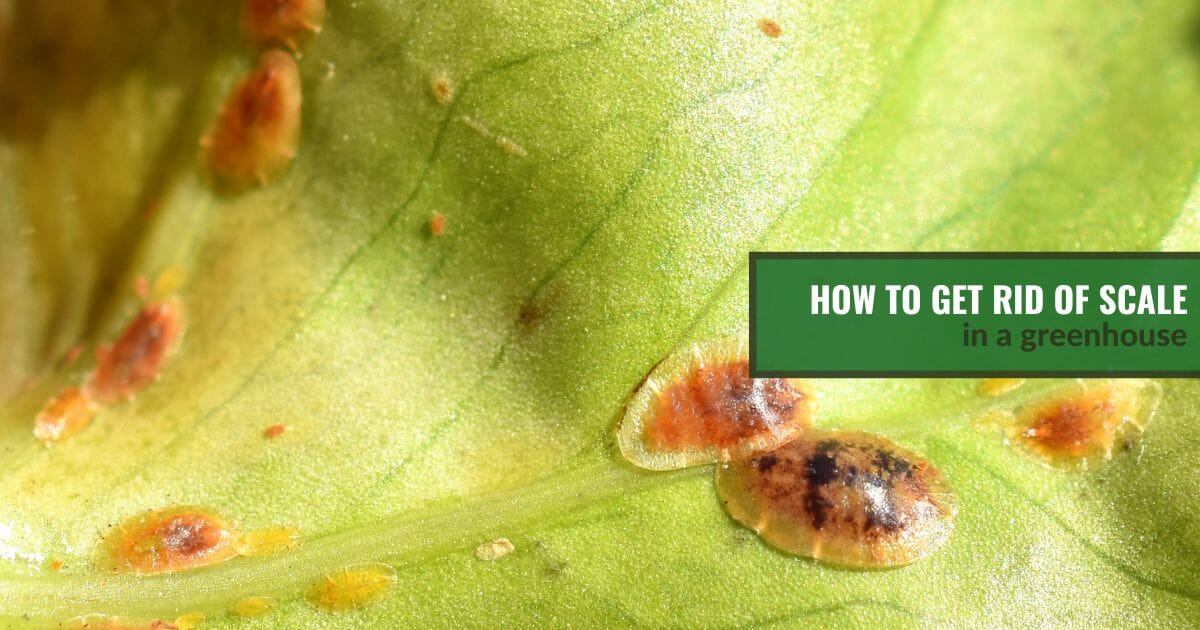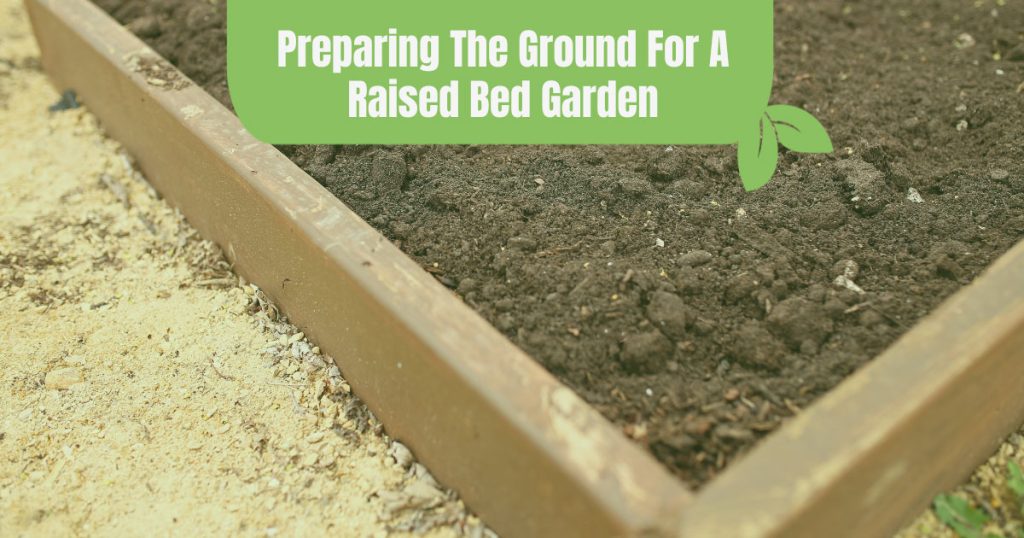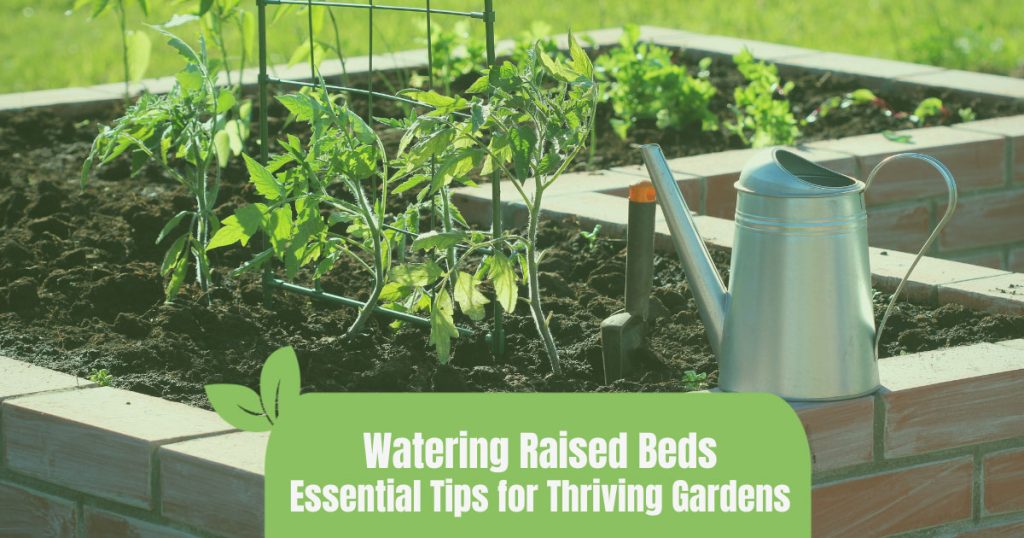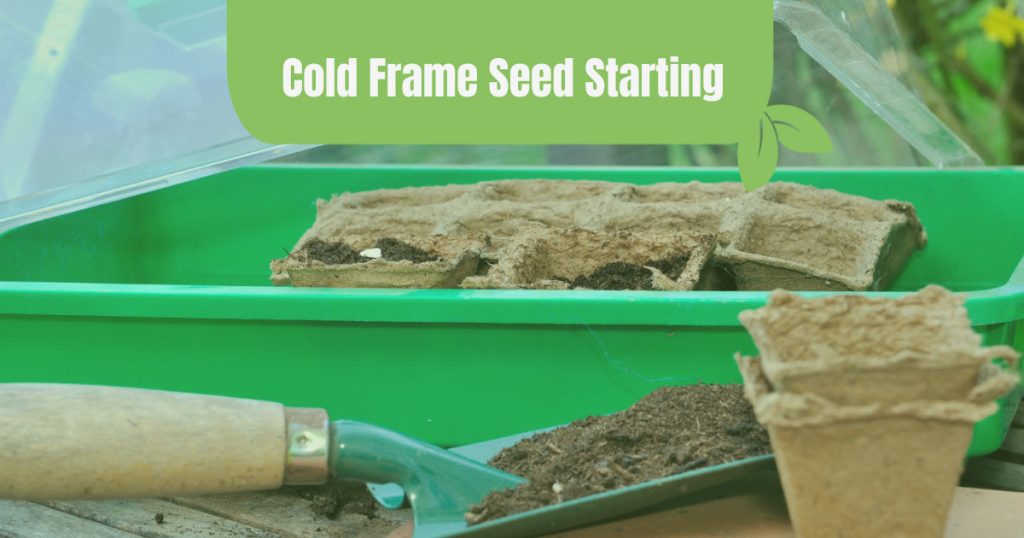







Scale insects may not be the most obvious greenhouse pest, but they can be a serious threat to your plants. Not only do they feed on plant juices, but their excretions of honeydew can cause sooty mold and even attract ants. While they do little damage in small numbers, once their populations get out of control, removing them can become a nightmare.
Scale insects can attack a wide range of greenhouse plants, from trees and shrubs to flowers and vegetables. They can be resistant to pesticides but there are several organic methods of control that can get rid of scale in your greenhouse. For example, you can use horticultural oils, insecticidal sprays, rubbing alcohol, and even beneficial insects.
Scale insects can be difficult to eradicate completely in the warm greenhouse environment, given their protective covering and unassuming appearance. As a result, early detection and prevention are the best ways to control them.
What is scale?
Scales are a type of sap-sucking insect that feed on plant juices through their thin, straw-like mouths. They usually range in size from 1/16 to 1/4 inches long and have oval-shaped, flat bodies. They’re often brown in color, which can make them hard to spot on plant stems, but easier to spot on bright green leaves.
Adult female scales are sedentary, so once they find a nice spot on your plants, they use their mouthparts to attach to leaves or stems and start feeding. Larvae (or nymphs), male insects (which have wings), and mealybugs (a type of soft scale) are more active and will move around on the plants until they find a place to settle down.
Scale insects can be a serious problem for your greenhouse plants because their feeding habits can cause yellowing, wilting, stunted growth, and even plant death. More importantly, however, they excrete a sticky, sweet substance called honeydew.
The sticky honeydew creates perfect conditions for sooty mold, a fungal disease that weakens and can eventually kill a plant. Honeydew also attracts ants, which start ‘farming’ the scales, perpetuating a vicious cycle resulting in more and more scales.
There are three main types of scale insects you can find in your greenhouse: hard scale, soft scale, and mealybugs.
Hard or armored scale
Armored scales (belonging to the Diaspididae family) are covered with a hard, waxy shell that protects them from predators. Unfortunately, their shell also protects them from insecticidal sprays, which makes getting rid of them tricky.
Hard scales don’t produce honeydew, so sooty mold is not a primary concern. They also act slowly, so signs of hard scale can be difficult to detect at first. Keep an eye out for yellow or brown spots on leaves or premature leaf drop.
These pests are rare in a greenhouse, but can be brought in from outside when overwintering trees, shrubs, and other frost-tender perennials. Have a look here to identify hard scale!
Soft scale
Soft scales (the Coccidae family) are not covered by a protective outer shell. They come in many shapes, sizes, and colors, and can resemble other pests, such as wooly aphids. You’ll most likely find them on soft-stemmed plants, such as herbs, vegetables, annual ornamentals, and houseplants.
Soft scales are the most common type of scale in greenhouses. Despite not having a shell to protect them, they can be a bigger problem than hard scales.
Female soft scales usually produce living young, not eggs, and can create more offspring even if there are no male scales around. A single female can produce thousands of baby scales in one year and will continue to reproduce even in winter if your greenhouse stays warm. This can result in serious, long-lasting infestations that are difficult to control and eradicate.
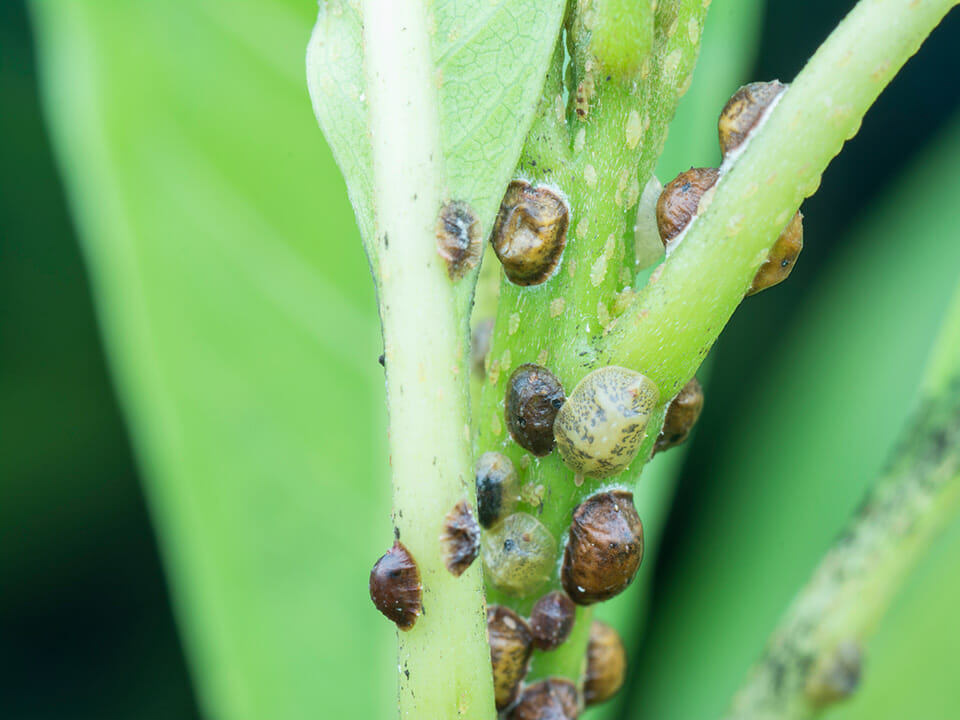
Mealybugs
Like armored and soft scales, mealybugs (the Pseudococcidae family) feed on plants by piercing leaf or stem tissue and sucking the juices out. And like soft scales, mealybugs excrete honeydew which can attract ants and cause fungal diseases such as sooty mold.
What sets mealybugs apart from the other scales is that they retain their legs, and thus their ability to move around. Their waxy, fuzzy, white bodies make them relatively easy to recognize. However, mealybugs may also feed underground, in which case you’ll have to rely on other signs of infestation, such as leaf yellowing.
How to identify scale on your greenhouse plants
To identify scale insects, look for small, round or oval bumps on plant stems and the underside of the leaves. Armored scales are usually brown, tan, or yellow. Soft scales can range in color from white to black and can be flat, waxy, or fuzzy. Mealybugs are usually white and have wool-like, waxy bodies.
Scales can be inconspicuous and, unless you check your plants regularly, you’re likely to miss them. Below are a few signs that your plants are suffering from a scale infestation.
Early stage signs of scale infestation
Scale infestations are easiest to cure if you act in the early stages, so keep an eye out for these symptoms:
- Yellowing leaves
- Leaf discoloration
- Wilting
- A sticky coating (honeydew) on the stems and leaves
- Upon close inspection, you should be able to see the insects with the naked eye

Late stage signs of scale infestation
Severe scale insect infestations are difficult to treat. In these cases, your best option is to use a systemic pesticide for the job. But if you’re an organic gardener, the best alternative is removing infected leaves or plants and accepting your losses. Signs of a severe scale infestation include:
- Large and very visible clumps of scale insects
- If dealing with soft scale, lots of honeydew residue on the stems and leaves
- Dramatic wilting
- Significant leaf yellowing
- No new growth (including flowers and fruit)
- Massive leaf loss
- The presence of ants, attracted by honeydew
- Black spots on the stems and leaves, a sign of sooty mold
- Cracked and peeling bark
- Dead branches on trees and shrubs
- Plant death
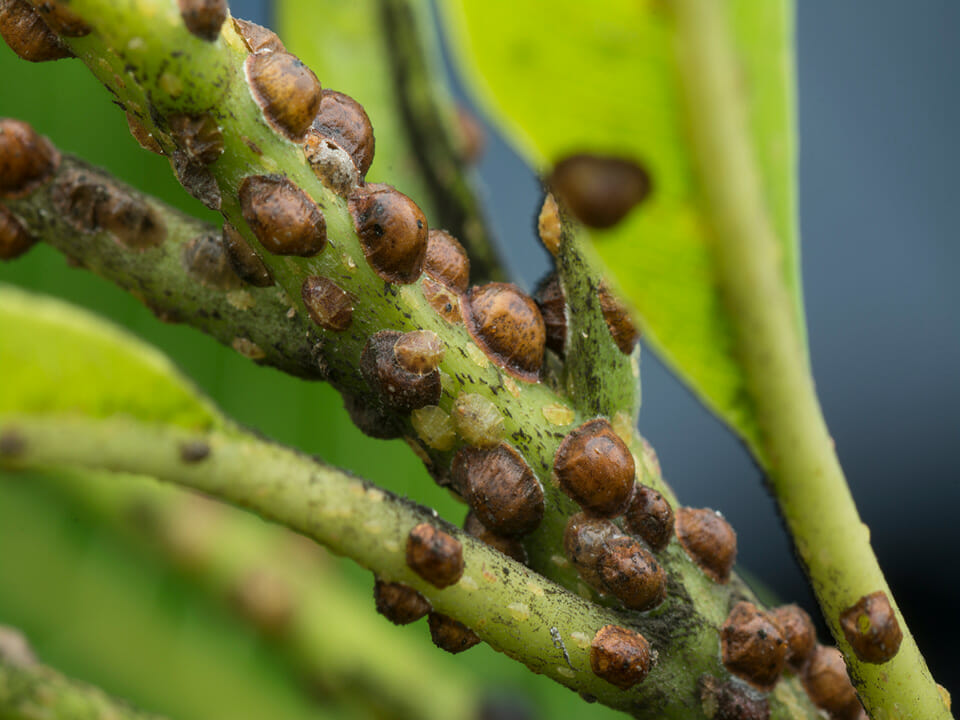
Which plants are vulnerable to scale insects?
Scale insects can infect a wide host of plants. Hard scales prefer trees and shrubs, while soft scales and mealybugs are more indiscriminate. Depending on where you live and what you’re growing in your greenhouse, here’s a list of plants that are most likely to attract scale:
- Herbs with woody stems, such as rosemary
- Citrus trees
- Olive trees
- Grape vines
- Avocado
- Plum, peach, cherry, mango, and other stone fruit trees
- Houseplants and exotic plants, such as orchids, ferns, ficus trees, palm trees, Dracaena, cacti and other succulents
Although different scale species prefer different types of plants, they’re all attracted to the same thing: plants that are weakened or stressed by poor growing conditions.
6 organic methods to get rid of scale in your greenhouse
A scale infestation won’t go away on its own. The best way to treat it in an organic greenhouse is to act as soon as you notice the symptoms. This will increase the efficiency of your treatment and ensure that you won’t have to resort to toxic chemicals for the job.
Pruning infected leaves
If you’re dealing with a mild infestation, you can simply prune any scale-infested leaves. Use a sharp pair of scissors and make sure to disinfect the blades after use, to prevent spreading pests or disease from one plant to the other.
Avoid adding sick leaves to your compost. Adult scales can survive in the bin, and once they escape, they’ll simply reinfest your plants.
Isopropyl alcohol
Using isopropyl or rubbing alcohol is one of the easiest ways to remove scale. Start by using a soft brush or cotton swab dipped in alcohol to scrub the insects off. The alcohol will dry them out, effectively killing the insects on contact.
After you remove them, mix a solution of 1 part 70% isopropyl alcohol and 4 parts water. Spray it on the stems and underside of the leaves every 7-10 days for about a month. This treatment may cause leaf burn on sensitive plants, so make sure to test it out on a small section first.

Insecticidal soap solution
An insecticidal soap solution can help you deal with the early stages of a scale infestation. This product works best on larvae or nymphs, but it won’t be very effective against adults (especially if they’re hard scales).
You can make your own solution by mixing one tablespoon of mild liquid soap or castile soap in one quart of water. Spray the mix on your plants once every 4-7 days for at least two weeks.
Horticultural oil
Horticultural oils derived from neem, rosemary, soybean, or cottonseed are very effective against scale. They smother the insects, suffocating and preventing them from feeding. Apply them in early spring, and they’ll help reduce the risk of serious infestations later in the season.
Avoid using horticultural oil if the temperature in your greenhouse is 90°F or higher, as this can burn the leaves. Similarly, avoid using it in temperatures below 32°F and in humid conditions, which can reduce its effectiveness.
Beneficial nematodes
Nematodes are microscopic worm-like organisms that you can use as a form of biopesticide. They attack scale insects by releasing pathogens that lead to the pests’ death. To use them, you simply mix them with water and then spray them directly on the infested areas.
There are several species of beneficial nematodes you can buy (usually online), such as Heterorhabditis bacteriophora and Steinernema kraussei. Steinernema feltiae is a fantastic species that works against scale as well as fungus gnat larvae living in the soil.
Beneficial insects
Scale insects have many natural predators that can help you control their populations. Ladybugs, lacewings, and parasitic wasps are just some of the biological control options you can try.
One of the most efficient methods to use in your greenhouse is a combo of predatory ladybugs and parasitic wasps. For a more complete list of scales’ natural enemies, check out this resource (page 49+).

If you’re planning to use beneficial insects to fight scale, avoid using horticultural oil or insecticidal sprays for at least a month in advance. You can use sprays to kill and remove the bulk of these pests, then follow up with the addition of predatory insects to remove the remaining scales and help prevent future outbreaks.
How to prevent scale infestations in a greenhouse
Scale can be difficult to get rid of once the infestation goes unnoticed for too long. To avoid losing your crops to this pest, here are a few tips that will help you prevent and ensure that it doesn’t come back:
Inspect your plants regularly
The easiest way to defeat scale insects is by staying one step ahead of them. Make time once a week to check the stems and underside of the leaves, moving from the bottom up.
Check each new plant you bring into the greenhouse, whether it’s something from a nursery or an outside plant that needs overwintering. Quarantine new plants for 1-2 weeks, especially if they’re shrubs or small trees.
Set sticky tape traps
Most scale insects can’t fly, which means they’ll have to crawl to their next food source. A double-sided sticky tape trap is a great way to catch them before they reach your plants. Set up the traps at the base of the stems, preferably in spring.
Control ant populations
Finding ants in your greenhouse is never a good sign. Best case scenario, they’re ‘farming’ aphids; worst case scenario, they’re ‘farming’ scales and mealybugs. Ants will go out of their way to protect scales from predators, and will attack any beneficial insects that put their ‘honeydew herds’ at risk.
Seal any gaps and cracks, and use deterrents to keep ants out of your greenhouse. Use diatomaceous earth to kill them, or set up an ant trap using a solution of water, sugar, and borax.
Keep your greenhouse tidy
Regularly cleaning your greenhouse will give pests fewer places to hide. Tidy up the space at the start and the end of the growing season, and check any old pots, bags of soil, or plants that could hide hibernating insects.
Provide the right growing conditions for your plants
Healthy plants are less susceptible to scale infestations. Make sure you provide your crops with plenty of light, proper watering, and regular fertilizer. Also, avoid overcrowding your plants to increase air circulation and make it easier to spot infestations.

